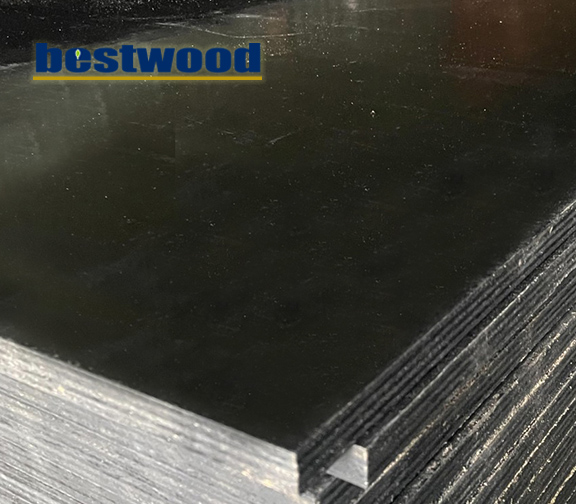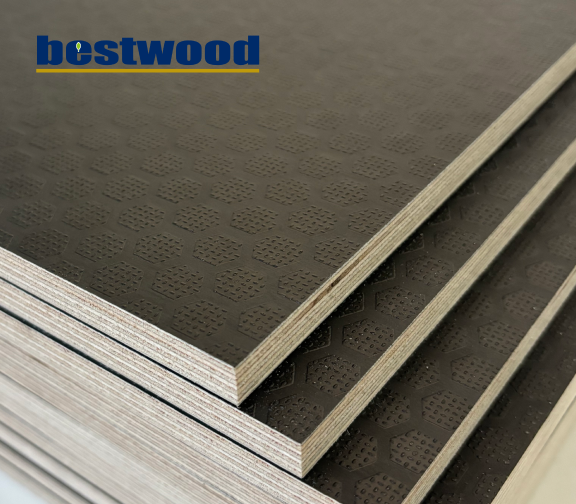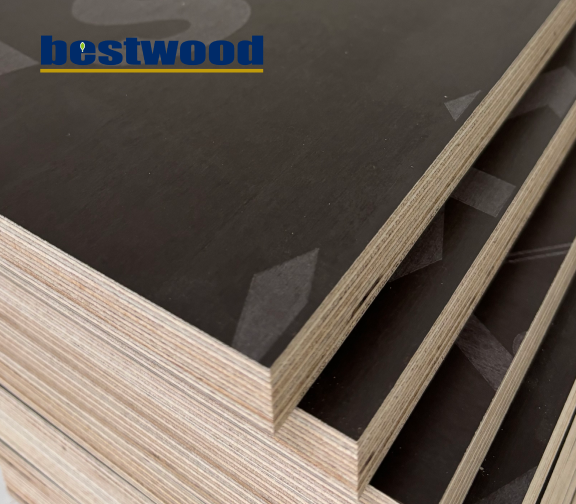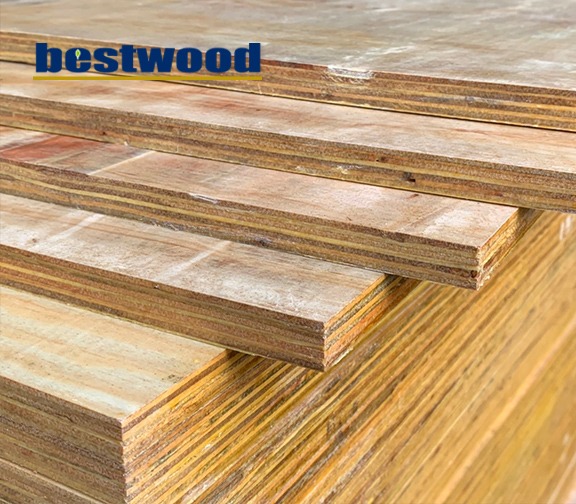
1 /
1
Film-Faced Plywood
Description:
Thickness : 15 / 18 mm
Grade : Grade 1, Grade 1/2
- WBP Waterproof Adhesive
- Phenolic Resin Film Pressed
- After concrete demolding, the surface is flat and does not require sanding.
-
Film-Faced plywood, laminated with phenolic resin film under heat and pressure, utilizes WBP waterproof adhesive, making its surface waterproof, durable, and resistant to chemicals, fungi, and mold. Film-Faced plywood primary advantage lies in its use as a concrete formwork where it ensures a smooth finish without the need for additional sanding, showcasing the natural beauty of concrete. Hence, film plywood finds widespread application in formwork projects.
High Strength and Wear Resistance
Film-Faced plywood exhibits excellent wear resistance and can withstand corrosive environments, including exposure to chemicals, within the temperature range of -40 to +50°C.
Versatility
Film-Faced plywood can be used for horizontal forms, shear wall forms, column forms, beam forms, etc., significantly reducing the quantity of formwork required and improving cost-effectiveness.
Concrete Formwork Plywood
Film-Faced plywood is commonly used as "concrete formwork plywood," providing a stable surface for pouring concrete. It is utilized for constructing building exterior platforms or as internal and external wall panels during concrete pouring. To enhance its durability against outdoor weather conditions, different amounts of adhesive are used, resulting in improved weather resistance and structural strength.
The national standard for concrete formwork plywood is CNS 8057, which differs from the standards for "ordinary plywood," "special purpose plywood," and "structural plywood" commonly used for indoor construction projects. Therefore, consumers are advised by the Bureau of Standards, Metrology, and Inspection to select plywood labeled for indoor use, such as "ordinary plywood," "special purpose plywood," or "structural plywood," for interior decoration projects.Adventage of bestwood

-
Film plywood is renowned for its high strength, lightweight, smoothness, uniform thickness, wear resistance, ease of demolding, low shrinkage, and low water absorption. It is widely used in various applications such as horizontal formwork, shear walls, vertical formwork for high-rise buildings, highways, elevated bridges, architectural formwork, civil engineering tunnels, bridges, retaining walls, and more. Additionally, Film plywood finds applications in shipbuilding, manufacturing of vehicle compartments, various military and light industrial products, as well as packaging.
Architectural Formwork Construction
In architectural formwork construction, the term "architectural formwork" refers to the process where concrete is poured and placed into molds (Film plywood) and, upon demolding, the surface undergoes minimal decorative finishing (only applying a protective coating). This allows the concrete surface to exhibit its natural texture through the plywood molds. In other words, architectural formwork results in smooth and uniformly textured surfaces, and if the plywood molds have wood grain patterns, the concrete surface will bear the imprint of these patterns.

-
Film-Faced Plywood CharacteristicFilm-Faced plywood, laminated with phenolic resin film under heat and pressure, utilizes WBP waterproof adhesive, making its surface waterproof, durable, and resistant to chemicals, fungi, and mold. Film-Faced plywood primary advantage lies in its use as a concrete formwork where it ensures a smooth finish without the need for additional sanding, showcasing the natural beauty of concrete. Hence, film plywood finds widespread application in formwork projects.
High Strength and Wear Resistance
Film-Faced plywood exhibits excellent wear resistance and can withstand corrosive environments, including exposure to chemicals, within the temperature range of -40 to +50°C.
Versatility
Film-Faced plywood can be used for horizontal forms, shear wall forms, column forms, beam forms, etc., significantly reducing the quantity of formwork required and improving cost-effectiveness.
Concrete Formwork Plywood
Film-Faced plywood is commonly used as "concrete formwork plywood," providing a stable surface for pouring concrete. It is utilized for constructing building exterior platforms or as internal and external wall panels during concrete pouring. To enhance its durability against outdoor weather conditions, different amounts of adhesive are used, resulting in improved weather resistance and structural strength.
The national standard for concrete formwork plywood is CNS 8057, which differs from the standards for "ordinary plywood," "special purpose plywood," and "structural plywood" commonly used for indoor construction projects. Therefore, consumers are advised by the Bureau of Standards, Metrology, and Inspection to select plywood labeled for indoor use, such as "ordinary plywood," "special purpose plywood," or "structural plywood," for interior decoration projects.Adventage of bestwood

-
Film-Faced Plywood ApplicationsFilm plywood is renowned for its high strength, lightweight, smoothness, uniform thickness, wear resistance, ease of demolding, low shrinkage, and low water absorption. It is widely used in various applications such as horizontal formwork, shear walls, vertical formwork for high-rise buildings, highways, elevated bridges, architectural formwork, civil engineering tunnels, bridges, retaining walls, and more. Additionally, Film plywood finds applications in shipbuilding, manufacturing of vehicle compartments, various military and light industrial products, as well as packaging.
Architectural Formwork Construction
In architectural formwork construction, the term "architectural formwork" refers to the process where concrete is poured and placed into molds (Film plywood) and, upon demolding, the surface undergoes minimal decorative finishing (only applying a protective coating). This allows the concrete surface to exhibit its natural texture through the plywood molds. In other words, architectural formwork results in smooth and uniformly textured surfaces, and if the plywood molds have wood grain patterns, the concrete surface will bear the imprint of these patterns.

Related products






